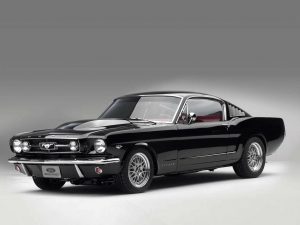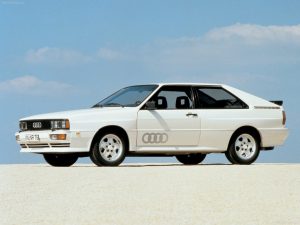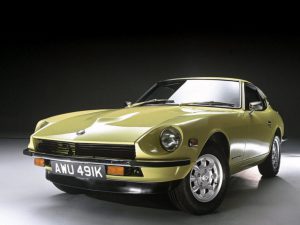 Many cars disappear in history while others stay and live on for a long time. The term "Classic" can be loosely used and may have different interpretions. Opinions differ on how a car is defined as a classic, vintage or antique and depends on where you are or who you ask. Many government bodies define the term as any car older than 35 years, on the other hand auto journalists and enthusiast apply the term to any old car they personally favor. Generally speaking they can be categorized as either a collectible or a special interest car.
Many cars disappear in history while others stay and live on for a long time. The term "Classic" can be loosely used and may have different interpretions. Opinions differ on how a car is defined as a classic, vintage or antique and depends on where you are or who you ask. Many government bodies define the term as any car older than 35 years, on the other hand auto journalists and enthusiast apply the term to any old car they personally favor. Generally speaking they can be categorized as either a collectible or a special interest car.
The term "Modern Classic" is referred to current released cars which are thought to be a future classic, such as the first generation Subaru Impreza (1993-2001) or the limited edition Aston Martin One-77.

Collectible
An Automobile is considered collectable for any number of reasons, the few that seem to apply are:

- A limited number of the car was produced. Sometimes car have personalized plaques indicating that they are number XX out of 1000.
- It was released for a special occasion, purpose or market. E.g. Model/Manufacture Anniversary, winning of race/championship.
- The manufacture has a history of producing collectible cars. E.g. Bugatti, Alfa Romeo.
- It is known to increase in value over the years.
- Hollywood Presence - the car was part of a famous movie/series.
 Special Interest
Special interest vehicles are those whom are supported by a large community for a specific model and show special interest in it. This can range from a special interest in competition, to a special interest in the company or person that designed or built the car. These special interest cars are collectible, but usually limited to a group of people.
E.g. Ford Capri, Toyota Celica (TA22) .
Special Interest
Special interest vehicles are those whom are supported by a large community for a specific model and show special interest in it. This can range from a special interest in competition, to a special interest in the company or person that designed or built the car. These special interest cars are collectible, but usually limited to a group of people.
E.g. Ford Capri, Toyota Celica (TA22) .
Valuations
There are several "Value Guides" available from various sources that provide at least a broad framework for establishing current market bounds related to the values of many of these vehicles. Usually a guide's divide prices in several levels which establish a price depending on the condition of the vehicle:
- Excellent - every aspect of the car has been fully restored and is in mint condition.
- Good - the car would be in great condition, and may have been restored a while back, but might have some missing parts or some areas needing to check into.
- Average -The car is drive-able but with need to be restored, usually the car is missing parts, may be damaged in some areas or haven't been serviced in a while.
- Project - the car is in a very bad state. Usually cars in this category have been severely rotten out and have been abandoned to the elements. They would need a complete restoration from the ground up, and sometimes the only thing originally used is the chassis number and paperwork.
However the values provided by the guides are simply "Guides" to be considered along with many other factors, prior to a sale taking place. At the end the value of any of a classic car is determined when a knowledgeable buyer reaches agreement with a knowledgeable seller, and a sale is completed. Thus any of these automobiles is worth what someone is willing to pay for it, at any given point in time.
Condition
A classic car to keep value must be in good condition. Most cars change ownership quote frequently and the usual rusted body panels, torn seats, and cracked light lens are the few things which one must look into. With some parts being rare and obsolete, it is important that the car is complete, otherwise you'll be on a treasure hunt to find the required part.
In conclusion, the word "Classic" is defined in most dictionaries as "of ageless appearance and lasting beauty". In other words if you had never seen the car before, and you saw it for the first time today, it would strike you as a beautiful design. Classic cars should represent the highlight of automobile styling, design and engineering.
Use code carsaddiction for 20% off!
 Many cars disappear in history while others stay and live on for a long time. The term "Classic" can be loosely used and may have different interpretions. Opinions differ on how a car is defined as a classic, vintage or antique and depends on where you are or who you ask. Many government bodies define the term as any car older than 35 years, on the other hand auto journalists and enthusiast apply the term to any old car they personally favor. Generally speaking they can be categorized as either a collectible or a special interest car.
Many cars disappear in history while others stay and live on for a long time. The term "Classic" can be loosely used and may have different interpretions. Opinions differ on how a car is defined as a classic, vintage or antique and depends on where you are or who you ask. Many government bodies define the term as any car older than 35 years, on the other hand auto journalists and enthusiast apply the term to any old car they personally favor. Generally speaking they can be categorized as either a collectible or a special interest car.
The term "Modern Classic" is referred to current released cars which are thought to be a future classic, such as the first generation Subaru Impreza (1993-2001) or the limited edition Aston Martin One-77.

Collectible
An Automobile is considered collectable for any number of reasons, the few that seem to apply are:

- A limited number of the car was produced. Sometimes car have personalized plaques indicating that they are number XX out of 1000.
- It was released for a special occasion, purpose or market. E.g. Model/Manufacture Anniversary, winning of race/championship.
- The manufacture has a history of producing collectible cars. E.g. Bugatti, Alfa Romeo.
- It is known to increase in value over the years.
- Hollywood Presence - the car was part of a famous movie/series.
 Special Interest
Special interest vehicles are those whom are supported by a large community for a specific model and show special interest in it. This can range from a special interest in competition, to a special interest in the company or person that designed or built the car. These special interest cars are collectible, but usually limited to a group of people.
E.g. Ford Capri, Toyota Celica (TA22) .
Special Interest
Special interest vehicles are those whom are supported by a large community for a specific model and show special interest in it. This can range from a special interest in competition, to a special interest in the company or person that designed or built the car. These special interest cars are collectible, but usually limited to a group of people.
E.g. Ford Capri, Toyota Celica (TA22) .
Valuations
There are several "Value Guides" available from various sources that provide at least a broad framework for establishing current market bounds related to the values of many of these vehicles. Usually a guide's divide prices in several levels which establish a price depending on the condition of the vehicle:
- Excellent - every aspect of the car has been fully restored and is in mint condition.
- Good - the car would be in great condition, and may have been restored a while back, but might have some missing parts or some areas needing to check into.
- Average -The car is drive-able but with need to be restored, usually the car is missing parts, may be damaged in some areas or haven't been serviced in a while.
- Project - the car is in a very bad state. Usually cars in this category have been severely rotten out and have been abandoned to the elements. They would need a complete restoration from the ground up, and sometimes the only thing originally used is the chassis number and paperwork.
However the values provided by the guides are simply "Guides" to be considered along with many other factors, prior to a sale taking place. At the end the value of any of a classic car is determined when a knowledgeable buyer reaches agreement with a knowledgeable seller, and a sale is completed. Thus any of these automobiles is worth what someone is willing to pay for it, at any given point in time.
Condition
A classic car to keep value must be in good condition. Most cars change ownership quote frequently and the usual rusted body panels, torn seats, and cracked light lens are the few things which one must look into. With some parts being rare and obsolete, it is important that the car is complete, otherwise you'll be on a treasure hunt to find the required part.
In conclusion, the word "Classic" is defined in most dictionaries as "of ageless appearance and lasting beauty". In other words if you had never seen the car before, and you saw it for the first time today, it would strike you as a beautiful design. Classic cars should represent the highlight of automobile styling, design and engineering.
Use code carsaddiction for 20% off!